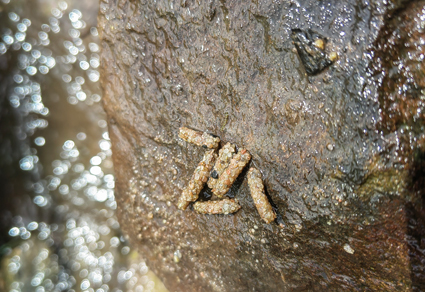Abstract
Adult females from the town of Xin-si, Ding-xi County, Gan-su Province, as well as larvae and pupae from Tian-jun and Qi-lian Counties, Hai-bei Tibetan Autonomous Prefecture, Qing-hai Province, were examined, and their COI sequences were extracted and analyzed. Adult females were identified as Anabolia appendix (Ulmer 1905) and were associated with larvae and pupae by their COI sequences. The larva and pupa of A. appendix are described and diagnosed for the first time and morphological photos of the larva and pupa of A. appendix are also provided. All the COI sequences have been uploaded to GenBank. All specimens are deposited in the Insect Collection, Nan-jing Agricultural University, Nan-jing, Jiang-su Province, P. R. China.
References
- Berte, S.B. & Pritchard, G. (1986) The life histories of Limnephilus externus Hagen, Anabolia bimaculata (Walker), and Nemotaulius hostilis (Hagen) (Trichoptera, Limnephilidae) in a pond in southern Alberta, Canada. Canadian Journal of Zoology, 64 (10), 2348–2356. https://doi.org/10.1139/z86-350
- Folmer, O., Black, M., Hoeh, W., Lutz, R. & Vrijenhoek, R. (1994) DNA primers for amplification of mitochondrial cytochrome coxidase subunit I from diverse metazoan invertebrates. Molecular Marine Biology and Biotechnology, 3, 294–299. [PMID: 7881515]
- Hebert, P.D., Cywinska, A., Ball, S.L. & Dewaard, J.R. (2003) Biological identifications through DNA barcodes. Proceedings of the Royal Society of London. Series B: Biological Sciences, 270 (1512), 313–321. https://doi.org/10.1098/rspb.2002.2218
- Lepneva, S.G. (“1966” 1971) Fauna of the USSR, Trichoptera, Larvae and pupae of the Integripalpia Ⅱ (2). Proceedings of the Zoological Institute of the Academy of Science of the USSR, New Series, 95, 291–306.
- Morse, J.C. (2024) Trichoptera World Checklist. Available from: https://trichopt.app.clemson.edu/welcome.php (accessed 11 April 2024)
- Morse, J.C., Holzenthal, R.W., Robertson, D.R., Rasmussen, A.K. & Currie, D.C. (2019) Trichoptera families. In: Merritt, R.W., Cummins, K.W. & Berg M.B. (Eds.), An Introduction to the Aquatic Insects of North America. 5th Edition. Kendall Hunt, Dubuque, Iowa, pp. 585–764.
- Philipson, G.N. (1954) The effect of water flow and oxygen concentration on six species of caddis fly (Trichoptera) larvae. Proceedings of the Zoological Society of London, 124 (3), 547–564. https://doi.org/10.1111/j.1469-7998.1954.tb07797.x
- Sipahiler, F. (2001) Anabolia anatolica sp. n., a New Species of Genus Anabolia Stephens (Trichoptera, Limnephilidae) from Southern Anatolia. Aquatic insects, 23 (2), 135–139. https://doi.org/10.1076/aqin.23.2.135.4922
- Solem, J. & Johansson, A. (1991) Larva and biology of Anabolia concentrica (Zetterstedt, 1840) and comments on other Fennoscandian Anabolia spp. (Trichoptera, Limnephilidae). Fauna Norvegica, 38, 53–63.
- Waringer, J., Graf, W. & Malicky, H. (2012) Description of the larvae of Anabolia lombarda Ris, 1897 and Limnephilus sericeus (Say, 1824), with additional notes on Limnephilus flavospinosus Stein, 1874 (Trichoptera: Limnephilidae). Aquatic insects, 34 (2), 93–105. https://doi.org/10.1080/01650424.2012.718084
- Wiggins, G.B. (1996) Larvae of the North American Caddisfly Genera (Trichoptera). University of Toronto Press, Toronto, 457 pp. https://doi.org/10.3138/9781442623606
- Zhou, X. (2007) The larvae of Chinese Hydropsychidae (Insecta: Trichoptera): Delimiting species boundaries using morphology and DNA sequences. PhD thesis, Rutgers University, New Brunswick, New Jersey, 249 pp.


